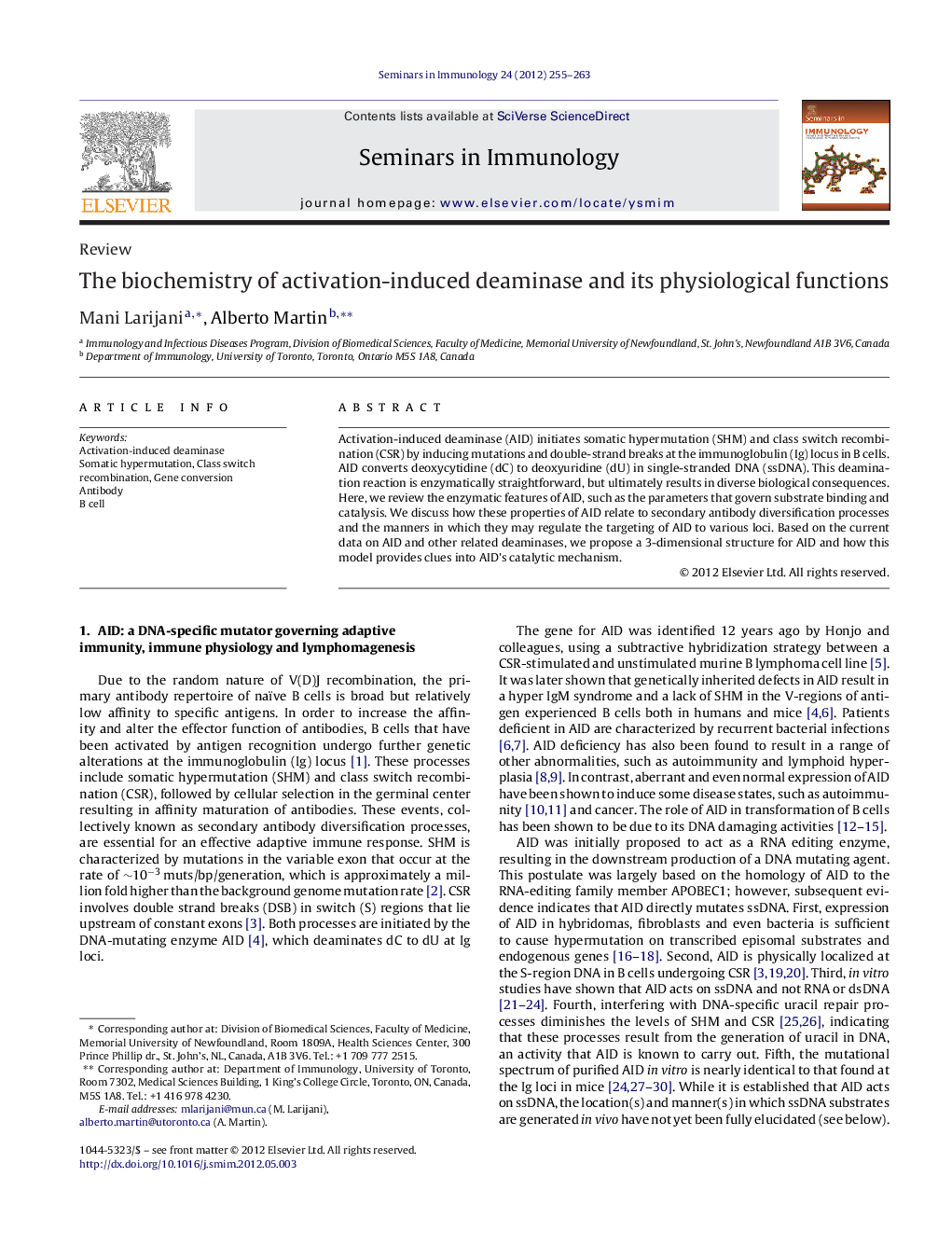| Article ID | Journal | Published Year | Pages | File Type |
|---|---|---|---|---|
| 3391503 | Seminars in Immunology | 2012 | 9 Pages |
Activation-induced deaminase (AID) initiates somatic hypermutation (SHM) and class switch recombination (CSR) by inducing mutations and double-strand breaks at the immunoglobulin (Ig) locus in B cells. AID converts deoxycytidine (dC) to deoxyuridine (dU) in single-stranded DNA (ssDNA). This deamination reaction is enzymatically straightforward, but ultimately results in diverse biological consequences. Here, we review the enzymatic features of AID, such as the parameters that govern substrate binding and catalysis. We discuss how these properties of AID relate to secondary antibody diversification processes and the manners in which they may regulate the targeting of AID to various loci. Based on the current data on AID and other related deaminases, we propose a 3-dimensional structure for AID and how this model provides clues into AID's catalytic mechanism.
► We discuss the evolution of AID within the APOBEC family of deaminases. ► We present a 3-dimensional model of AID and discuss structure–function relationships. ► We review data related to the catalytic mechanism of AID and provide a model for substrate deamination. ► We discuss substrate specificity and binding properties of AID as determinants of in vivo function.
